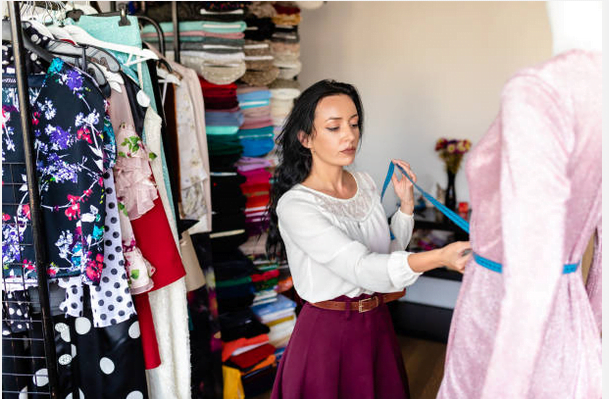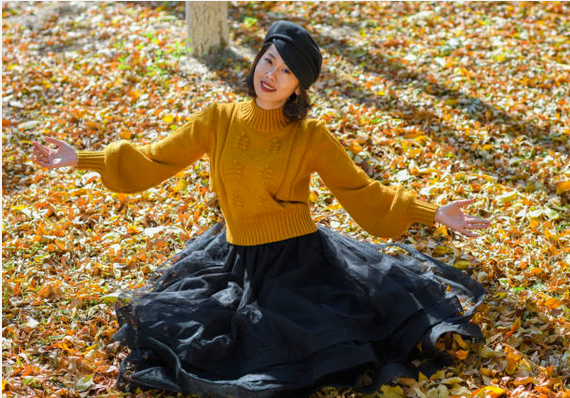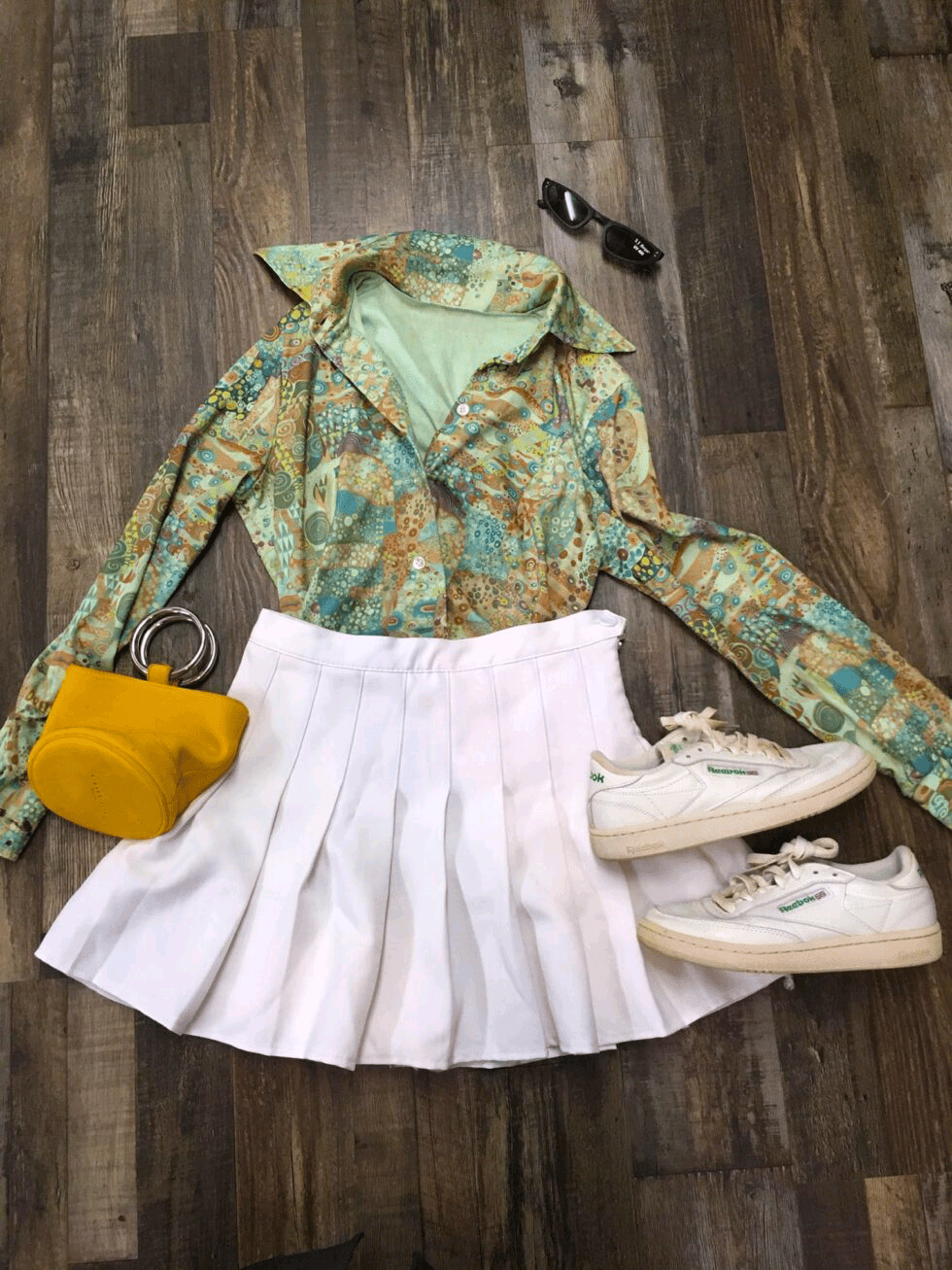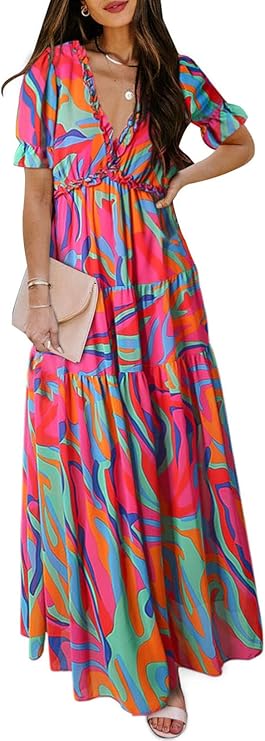Layering Basics for a Versatile Wardrobe

Layering is a fundamental skill in fashion that allows you to create a versatile wardrobe suitable for any occasion, season, or personal style. Whether you’re looking to stay warm in the winter, cool in the summer, or simply add depth and interest to your outfit, mastering the art of layering can transform your closet. This guide will cover the basics of layering, providing tips and tricks for creating stylish, functional, and versatile outfits.
1. Understanding the Basics of Layering
Layering involves combining multiple pieces of clothing to create a cohesive look. The goal is to mix and match items to enhance your outfit’s functionality, comfort, and aesthetic appeal. When layering, consider the following principles:
- Balance: Avoid layering too many bulky pieces together. If you’re wearing a thick sweater, balance it with slimmer pants or a fitted skirt.


- Proportion: Play with different lengths and shapes. For example, pair a cropped jacket with a longer top or a fitted bottom with a loose, flowing outer layer.


- Texture: Mix different fabrics to add visual interest. Combining materials like denim, leather, wool, and silk can create a dynamic and engaging outfit.

2. Essential Layering Pieces for Every Wardrobe
To create a versatile wardrobe, it’s essential to have a selection of layering pieces that can be mixed and matched effortlessly. Here are some foundational items to consider:
- Basic Tees and Tanks: These are the building blocks of any layered look. Opt for neutral colors like white, black, gray, and beige for maximum versatility.


- Button-Up Shirts: A classic button-up shirt can be worn under sweaters, blazers, or jackets. It adds a polished touch to any outfit and can be dressed up or down.


- Sweaters and Cardigans: These are perfect for adding warmth and texture. Choose a mix of lightweight and chunky knit options to cover different seasons and styles.


- Blazers and Jackets: These outer layers can add structure and sophistication to your outfit. Look for blazers in neutral colors and jackets in various styles, such as denim, leather, and bomber jackets.


- Scarves and Shawls: Accessories like scarves and shawls are excellent for adding color, pattern, and warmth to your look. They can be draped over your shoulders, wrapped around your neck, or even worn as a belt.


3. Layering for Different Seasons
Layering isn’t just for the colder months; it’s a year-round strategy that can be adapted to any season. Here’s how to layer for different weather conditions:
Spring: Light layers are key in the spring. Start with a basic tee or tank, add a light cardigan or denim jacket, and finish with a scarf for added flair.


Summer: Opt for breathable fabrics like cotton and linen. Layer a lightweight kimono or sheer blouse over a tank top, and pair with shorts or a skirt.


Fall: As temperatures drop, start incorporating heavier layers like sweaters and leather jackets. A button-up shirt under a chunky knit sweater with jeans is a classic fall look.


Winter: Focus on warmth by layering thermal tops under sweaters and adding a thick coat. Don’t forget accessories like scarves, gloves, and hats to keep warm while adding style.


4. Layering for Different Occasions
Layering can also help you transition your outfit from day to night or from casual to formal. Here are some tips for layering based on different occasions:
- Work: Start with a crisp button-up shirt and tailored pants. Add a blazer for a professional look. For colder days, layer a lightweight sweater underneath the blazer.


- Casual Weekend: Go for comfort with a basic tee, jeans, and a cardigan or denim jacket. Add a scarf or beanie for a laid-back vibe.


- Date Night: Layer a slip dress over a fitted turtleneck or a lace cami under a blazer for a chic and stylish look.


- Formal Events: Pair a sleek blouse with a pencil skirt and a tailored blazer. Add a statement necklace and a clutch to complete the look.


5. Layering Tips for Different Body Types
Layering can enhance your silhouette and highlight your best features when done correctly. Here are some layering tips for different body types:
- Petite: Opt for shorter jackets and cropped tops to elongate your frame. Avoid oversized layers that can overwhelm your silhouette.
- Curvy: Embrace fitted layers that highlight your waist. Belted jackets and wrap sweaters are great for defining your curves.
- Tall: Experiment with long layers like duster coats and maxi cardigans. These pieces can complement your height and add a dramatic touch to your outfit.
- Athletic: Create curves by layering with pieces that add volume, such as ruffled blouses or peplum jackets. A-line skirts and dresses can also add a feminine touch.

6.How To Mix Match Colours & Patterns
Layering is an excellent opportunity to experiment with colors and patterns. Here are some tips for mixing and matching:
- Stick to a Color Palette: Choose a few colors that complement each other and stick to them throughout your layers. This creates a cohesive look without being too overwhelming.
- Mix Patterns Wisely: Pair smaller prints with larger ones to balance the outfit. For example, a polka dot blouse can work well with a plaid skirt.
- Use Neutrals as a Base: Start with neutral-colored basics and add pops of color or pattern with accessories like scarves, hats, or shoes.

7. The Role of Accessories in Layering
Accessories play a crucial role in layering, as they can add dimension, color, and personality to your outfit. Consider the following accessory tips:
Belts: Use belts to cinch the waist and add structure to loose layers. This is especially useful for oversized cardigans or blazers.
Jewelry: Layered necklaces, stacked bracelets, and statement earrings can add sparkle and interest to your look. Be mindful not to over-accessorize; choose a few key pieces that complement your outfit.
Bags: A crossbody bag or tote can add practicality and style to your layered ensemble. Choose bags in neutral colors or bold patterns to enhance your look.

8. Building a Capsule Wardrobe with Layering in Mind
A capsule wardrobe is a collection of essential clothing items that can be mixed and matched to create various outfits. When building a capsule wardrobe with layering in mind, focus on versatile pieces that can be layered in multiple ways:
Invest in Quality Basics: High-quality tees, tanks, and sweaters are the foundation of a capsule wardrobe. Choose durable fabrics that can withstand frequent wear and washing.
Choose Versatile Outerwear: A well-fitted blazer, a classic trench coat, and a leather jacket are must-haves for any capsule wardrobe. These pieces can be dressed up or down and layered over different outfits.
Incorporate Statement Pieces: While basics are essential, don’t forget to include a few statement pieces that reflect your style. A bold printed scarf, a unique cardigan, or a colorful coat can add flair to your wardrobe.


9. Layering Mistakes to Avoid
While layering can elevate your style, there are some common mistakes to avoid:
Overloading on Layers: Too many layers can make you look bulky and feel uncomfortable. Aim for a balance between form and function.
Ignoring Proportion: Ensure that your layers complement each other in length and fit. For example, avoid pairing a long, oversized top with a long, flowy skirt.
Forgetting About Fabric Weight: Layering pieces of the same fabric weight can create an unflattering silhouette. Mix lightweight and heavier fabrics to add dimension to your outfit.
Clashing Colors and Patterns: While mixing colors and patterns can be fun, make sure they complement each other. Stick to a color palette and avoid combining too many bold prints.

10. Layering for Sustainability
Layering isn’t just a stylish choice; it’s also a sustainable one. By learning how to layer effectively, you can make the most out of your existing wardrobe and reduce the need for new clothing purchases. Here are some tips for layering with sustainability in mind:
Reinvent Old Pieces: Use layering to breathe new life into older pieces. A dress that’s been sitting in your closet for years can look brand new when layered with a turtleneck or cardigan.
Shop Your Closet: Before buying new clothes, look at what you already own. Often, you can create fresh outfits by layering items you already have in different ways.
Invest in Timeless Pieces: Choose classic, high-quality items that will last for years and never go out of style. These pieces are perfect for layering and can be worn in multiple ways.

11. Layering for Travel: Packing Smart
Layering is particularly useful when it comes to travel. Packing a versatile set of clothing that can be layered means you can create multiple outfits from fewer items, which saves space in your suitcase and makes it easier to adapt to different weather conditions.
- Pack Light Layers: Focus on lightweight, compact pieces that can easily be layered. Think of a couple of base layers, a few mid-layers like light sweaters or cardigans, and one or two versatile outer layers.
- Choose Neutral Colors: Neutral colors are easier to mix and match, which means you can create more outfits with fewer pieces. Think black, white, navy, gray, and beige.
- Include a Versatile Scarf: A scarf can serve multiple purposes, from adding warmth to an outfit to doubling as a blanket on a chilly flight. Choose a scarf in a neutral color or a subtle pattern that complements the rest of your travel wardrobe.
- Opt for Convertible Clothing: Look for pieces that can serve multiple functions, like a shirt dress that can be worn as a dress, a tunic, or even a beach cover-up.

12. Layering for Comfort and Practicality
Layering isn’t just about style—it’s also about comfort and practicality. By layering wisely, you can be prepared for a variety of situations:
- Temperature Changes: When moving between environments with different temperatures (like a warm car to a cold office), layering allows you to add or remove clothing easily.
- Active Wear: For those who enjoy outdoor activities or exercise, layering with breathable, moisture-wicking fabrics can keep you comfortable and dry.
- Traveling Light: When you don’t have room for a bulky coat, layering multiple thinner layers can provide the same warmth without the bulk.
- Versatile Work Attire: Transitioning from work to an evening out can be easy with layering. Add a blazer for a professional look at work, then remove it to reveal a chic top for after-hours.

13. Layering with Different Fabrics
The type of fabric you choose is crucial in layering because it affects the overall look and comfort of your outfit. Here’s how to layer with different fabrics:
- Cotton: Lightweight and breathable, cotton is great for base layers. Cotton tees and shirts provide a comfortable foundation for layering.
- Wool: Perfect for mid-layers, wool adds warmth without being too bulky. Wool sweaters and cardigans can be layered over shirts and under jackets.
- Silk: A silk blouse can be a great layering piece. It’s thin enough to wear under sweaters and jackets but adds a luxurious touch.
- Leather and Denim: These materials work well as outer layers. A leather jacket or denim jacket adds structure and edge to your look.
- Fleece and Down: Ideal for colder weather, fleece and down provide insulation without excessive bulk. Fleece jackets and down vests can be layered under coats for extra warmth.


14. Layering for Different Style Preferences
Layering can be adapted to suit various style preferences, whether you’re into minimalism, bohemian, or something in between:
- Minimalist: Stick to a neutral color palette and focus on clean lines and simple shapes. Layering with monochromatic pieces in different textures can create a sleek, modern look.
- Bohemian: Embrace patterns, textures, and a mix of materials. Layer a floral kimono over a crochet top with a fringe scarf for a free-spirited vibe.
- Preppy: Opt for classic pieces like button-down shirts, crewneck sweaters, and blazers. Layer a sweater over a collared shirt with a statement necklace for a polished look.
- Edgy: Mix leather, denim, and graphic tees for a rebellious style. Layer a leather jacket over a band tee with ripped jeans and chunky boots.

15. Incorporating Trends into Your Layered Looks
Fashion trends come and go, but layering can help you incorporate the latest trends without completely overhauling your wardrobe. Here’s how to do it:
- Add Trendy Accessories: Incorporate current trends with accessories like a bold belt, statement earrings, or a trendy scarf.
- Layer Trendy Pieces: If a particular style, like oversized blazers or statement sleeves, is in vogue, use it as a top layer over your existing basics.
- Mix Vintage and Modern: Pair vintage or thrifted finds with modern pieces to create a unique, fashion-forward look.

16. Layering for Formal and Semi-Formal Events
While layering is often associated with casual looks, it can also be elegantly applied to formal and semi-formal events:
- Formal Dresses: Layer a tailored blazer or cropped jacket over a formal dress to add warmth and sophistication.
- Semi-Formal Skirts and Tops: Pair a silk blouse with a pencil skirt and add a lightweight cardigan or shawl for an elegant look that’s still comfortable.
- Accessorize with Purpose: A statement necklace or pair of earrings can add an extra layer of sophistication to your outfit without needing additional clothing layers.

17. Layering as a Confidence Booster
Layering allows for self-expression and can be a powerful confidence booster. By experimenting with different combinations, you can discover what makes you feel most comfortable and stylish. Here are some ways layering can enhance your confidence:

Experiment with Styles: Don’t be afraid to try new styles and combinations. Layering gives you the freedom to mix and match different pieces until you find the perfect look.
- Highlight Your Favorite Features: Use layering to draw attention to your favorite features. For example, a cropped jacket can highlight your waist, while a scarf can bring attention to your face.
- Adapt to Your Mood: Layering lets you adjust your outfit according to how you feel. Feeling bold? Add a bright jacket. Want something more subdued? Stick to neutral layers.

18. Layering for Different Age Groups
Layering isn’t limited to any particular age group. It’s a versatile fashion technique that can be adapted for different ages:
- Teens and Young Adults: Younger people can experiment with bolder colors and prints. Try layering a graphic tee under a denim jacket with a colorful scarf.
- 30s and 40s: Focus on sophisticated layering with high-quality basics like blazers, sweaters, and tailored pants. Layering can be practical and stylish for work and casual settings.
- 50s and Beyond: Opt for classic pieces that provide comfort and style. Layering with softer fabrics like cashmere and silk can create elegant and age-appropriate looks.


19. Customizing Layering for Personal Style
Your personal style is a reflection of who you are, and layering can help you express that style more dynamically. Consider the following tips for personalizing your layered looks:
- Signature Pieces: Incorporate signature pieces that define your style, such as a favorite jacket, a beloved scarf, or a unique pair of shoes.
- Mix High and Low Fashion: Combine high-end pieces with affordable basics to create a balanced look that’s both stylish and budget-friendly.
- Play with Proportions: Experiment with different lengths and shapes to create a unique silhouette that suits your style and body type.

Conclusion: Embrace the Versatility of Layering
Layering is more than just a fashion trend; it’s a versatile and practical approach to dressing that can adapt to any situation, season, or personal style. By mastering the art of layering, you can make the most of your wardrobe, express your creativity, and enhance your confidence. Whether you’re dressing for work, a casual weekend, or a formal event, layering offers endless possibilities to create outfits that are not only stylish but also functional and unique to you.
Embrace layering as a key component of your fashion strategy, and enjoy the endless opportunities it offers to transform your wardrobe. With these tips and tricks, you’ll be layering like a pro in no time!






















